- Allwork.Space and Alliance Virtual Offices conducted a survey, and also analyzed third party research, to understand how remote work impacts individuals’ health and wellbeing.
- Workers benefit from being offered the option to work from home, but the greatest benefits were found among several minority groups.
- Remote work has been found to reduce stress and help workers break the glass ceiling – but it does still have some drawbacks, including physical ailments from using inadequate home furniture.
This article was originally published on Alliance Virtual Offices.
Workers Thrive When Given the Choice of Work Environment
We analyzed millions of figures, including those of our own workers at Alliance Virtual Offices and Allwork.Space, to see how remote work impacts individuals’ health and wellbeing.
To our surprise, we found that all workers benefit from being offered the option to work from home, but the greatest benefits were found among several minority groups.
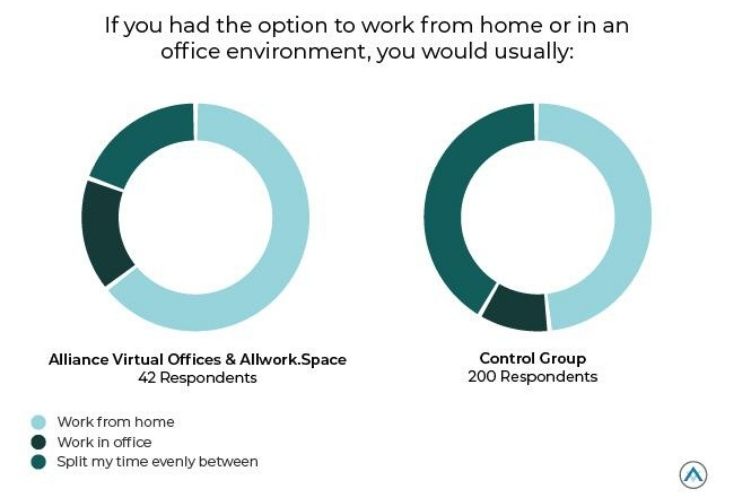
In addition to a literature review, we also surveyed workers across Alliance Virtual Offices and Allwork.Space to see how our teams compared to a control group.
We’re sure you’re ready for the stats, so check out our original research below.
References, methods, and procedures for this study can be found in the Methods and Procedures PDF.
Key Findings:
- Remote work options can help utilize the unique experience and skills of minorities, increasing diversity and equity.
- Offering parents remote work options can put $8 billion back into the economy.
- When given the option to work from home, workers were 22% more productive.
- Remote work reduces stress by 39%.
- Those with long commutes, especially women, are less happy and healthy.
- Without proper office equipment, workers are 27.5 – 46.9% more likely to gain weight and have an increase in pain.
- Cycling to work increases the chance of hospitalization by 2.6%.
- When compared to control groups, our teams have significantly lower commutes and are healthier and happier.
- Those with the option for remote work were 93% more likely to feel included.
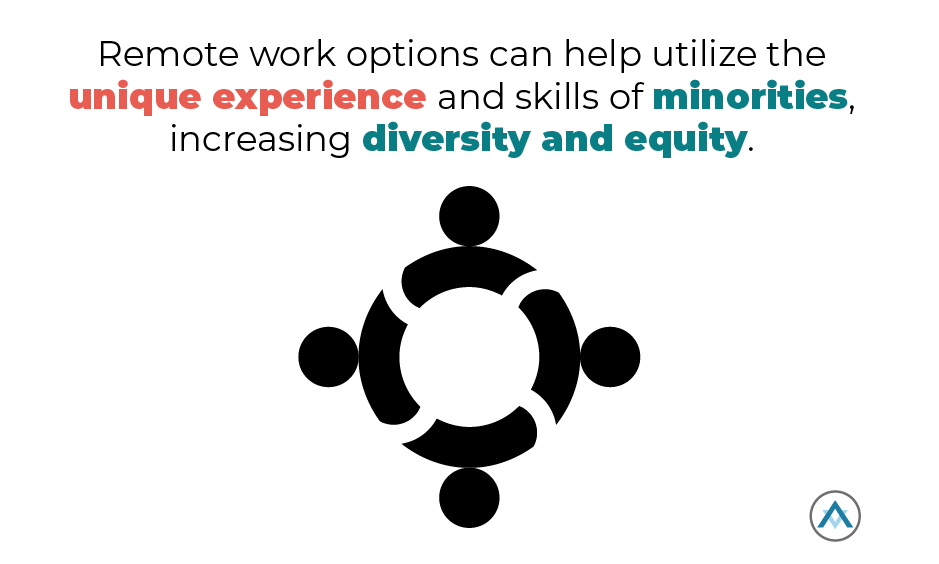
Remote Work can Improve Diversity and Equity
When a worker can be in the workplace without disclosing religious affiliation, race, nationality, sexual orientation, gender, pregnancies, or disabilities, the playing field is more level. The anonymity that remote work offers can provide safety and mental wellbeing for minorities by shielding them from discrimination, letting work speak for itself (Kennette, L. & Lin, P., 2021).
The unemployment rate in the U.S. among disabled individuals is around 9% – Remote work can bring many of these people back into the workforce, increasing possibilities for economic advancement.
According to one report, 133 million people in the U.S. are living with a chronic illness – remote work may be able to help them cope with their illnesses and stay in the workforce. (DeFelice, M., 2019).
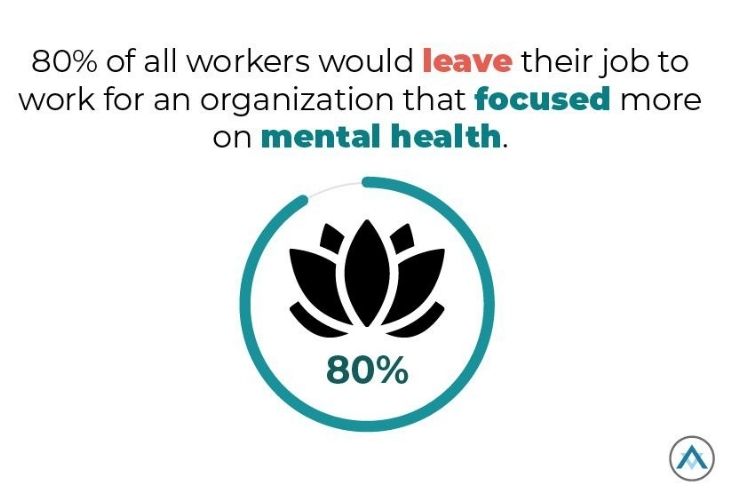
Regardless of mental health, disability, or minority status, 80% of all workers would leave their job to work for an organization that focused more on mental health (Westfall, C., 2020).
Allowing Workers to Work from Home can Help Break the Glass Ceiling
Millions of women have either quit or lost their jobs due to the lack of childcare, especially during the pandemic (Kennette & Lin, 2021).
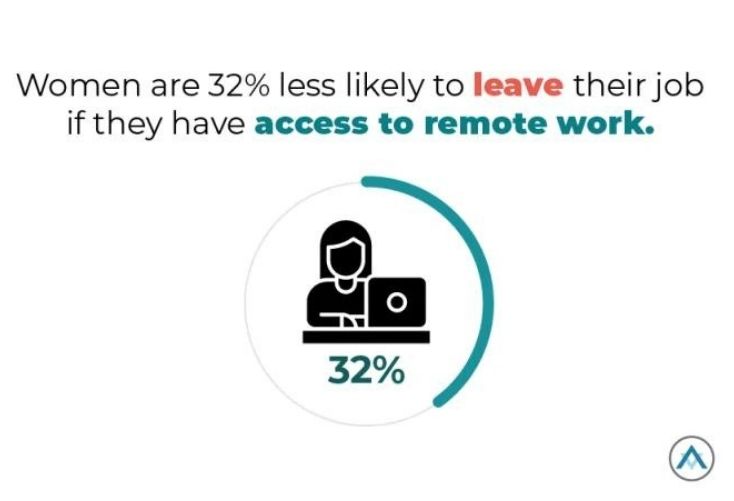
Women are 32% less likely to leave their job if they have access to remote work, as it allows them greater flexibility in working hours.
Not only would more women remain in their jobs, but offering work-from-home options for mothers could replace $8 billion in lost wages as they would be able to reenter the workforce (Connley, 2021).
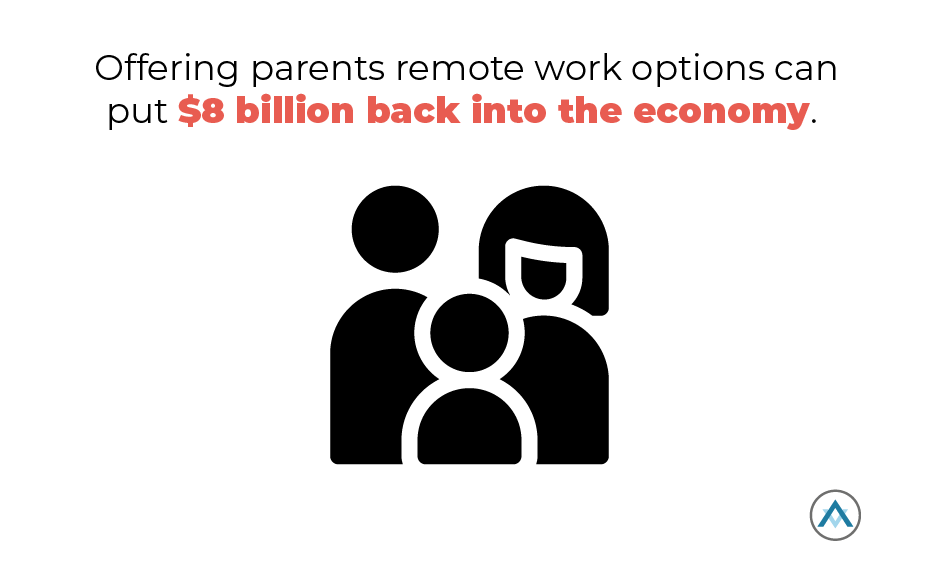
When both parents have the option to work at home, it establishes a more equal distribution of domestic labor and allows both partners to have more time with their children Additionally, educated women, who traditionally have fewer children later in life, when given the option to work from home can help them realize both their career and parenting goals (Murray, 2021).

Interestingly, men are more likely to be hesitant in embracing remote work. In a performance-driven atmosphere, many men reported they feared their achievements would go unnoticed, whereas women did not express the same fears. There may be many reasons for this phenomenon, but men having an unfair advantage in the workplace could be one reason (Kennette, L. & Lin, P., 2021).
Remote Workers are More Productive
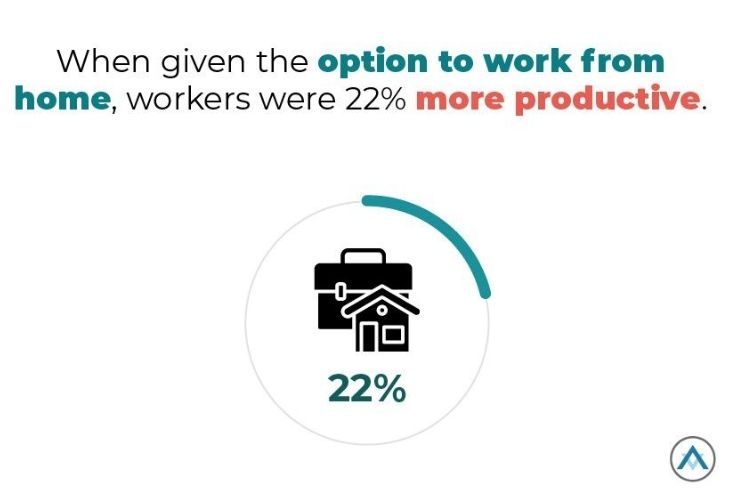
Remote workers are more relaxed, more efficient, and produced a higher volume of work (Guler, et al., 2021; Kennette, L. & Lin, P., 2021).
One study showed that remote work results in an increase in productivity by 13%, including more minutes worked per shift and fewer use of breaks and sick days. When workers in this study were offered the choice between working from home and working in the office, productivity rose to 22% (Bloom, et al., 2014).
Working from Home Significantly Reduces Stress
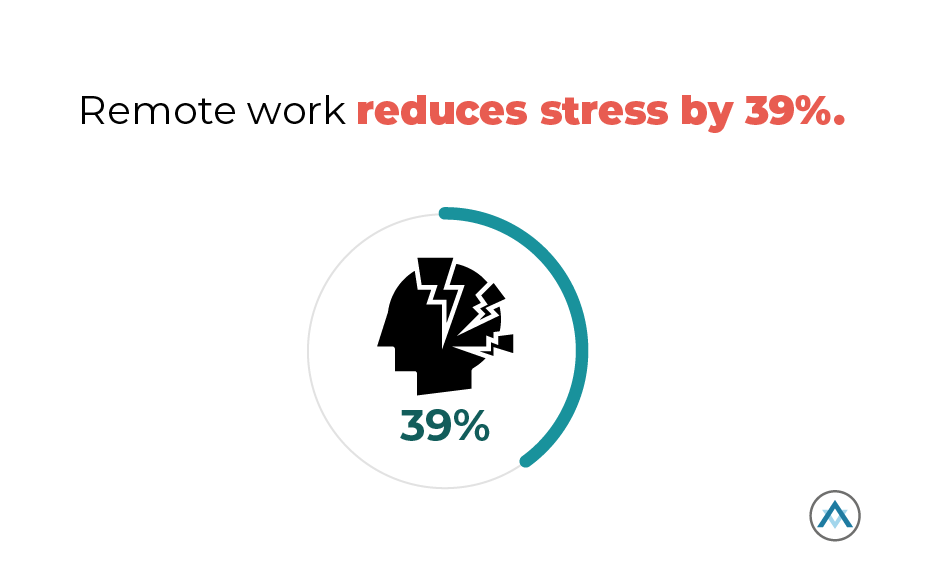
Long commute times trigger the release of cortisol in the brain, a hormone associated with stress. Not commuting can reduce stress due to savings on transportation costs.
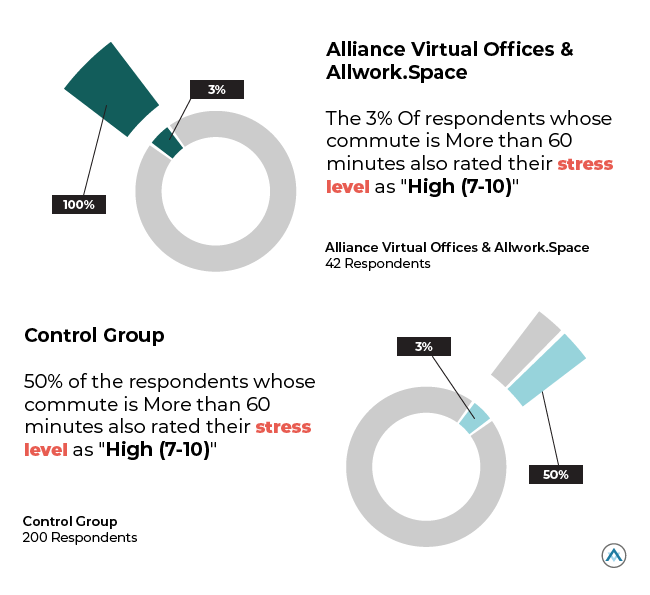
Not driving to work is financially beneficial as it saves money on fuel, maintenance, and/or toll costs and fares such as those for taxis and ride-sharing services (Kennette, L. & Lin, P., 2021).
Those with no commutes also reap the benefits of additional sleep time which is linked to many health benefits.
Workers with Long Commutes are Less Happy and Healthy
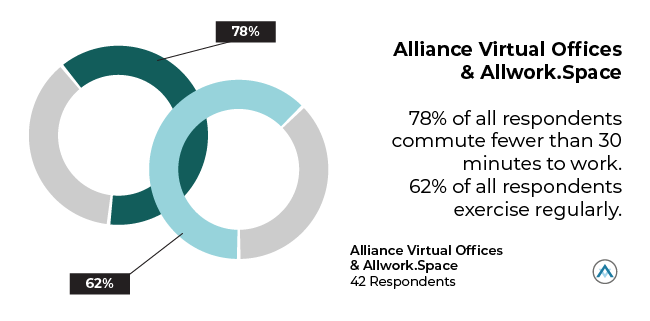
Workers with long commutes spend less time working out and enjoying leisure activities. They also have lower mood levels during the workday, more mental health problems, and are less satisfied with their social lives.
All of these negative outcomes increase in severity when commuting times are longer. Those who cycle to work seem to have the least side effects of this kind, but continue to experience some, and are exposed to other dangers, as can be seen below (Chatterjee, et al., 2020).
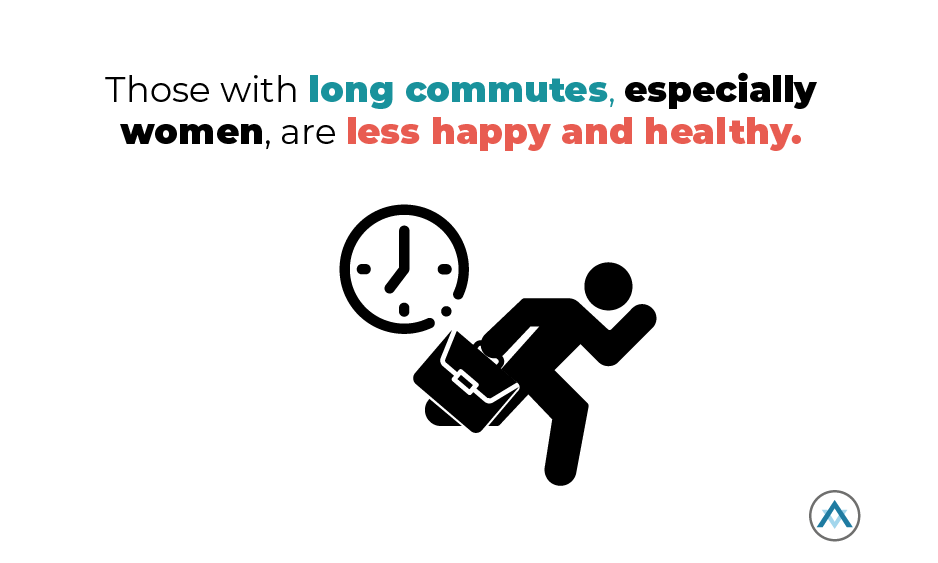
Negative outcomes are also reportedly worse for women, although the cause is unclear. One possibility is that women are often responsible for more household duties during commutes, such as picking up children and grocery shopping (Chatterjee, et al., 2020; Roberts et al., 2011).
But Remote Work Does Still have Some Drawbacks
27.5 – 46.9% of those who switched to working from home during the pandemic gained weight and a slight increase in pain levels due to inadequate work-related equipment, such as office chairs and desks.
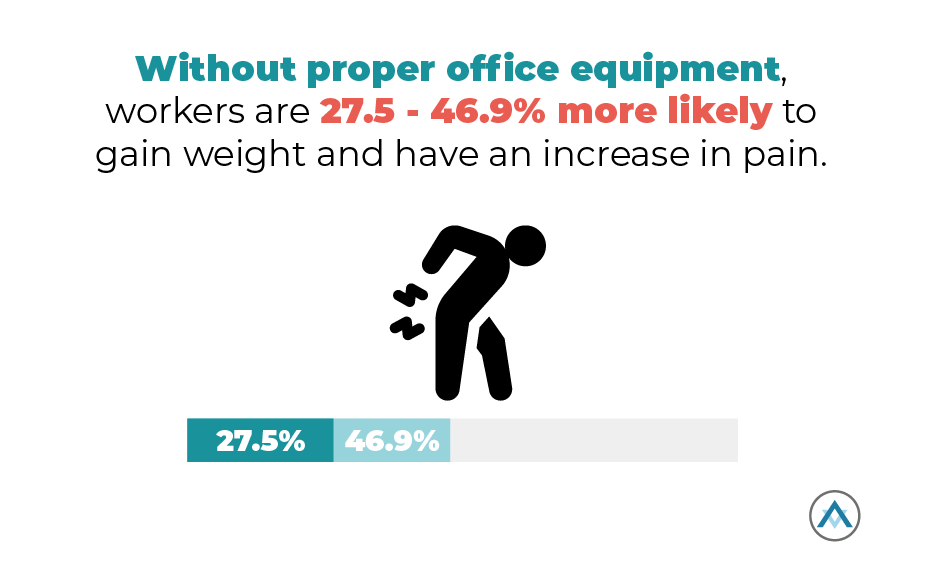
These increases enforce the need for employers to provide information and opportunities for healthy lifestyles and proper equipment for their remote workers (Guler, et al., 2021).
Thinking of taking up cycling? Maybe think again…
Cycling to work has great health benefits but could decrease life expectancy for younger workers (Edwards & Mason, 2014).
Fatal accidents involving pedestrians and cyclists account for 16% of all traffic fatalities every year (U.S. Department of Transportation, 2021). In fact, the leading cause of death globally for all people under age 54 is road crashes (Association for Safe International Road Travel, 2022).
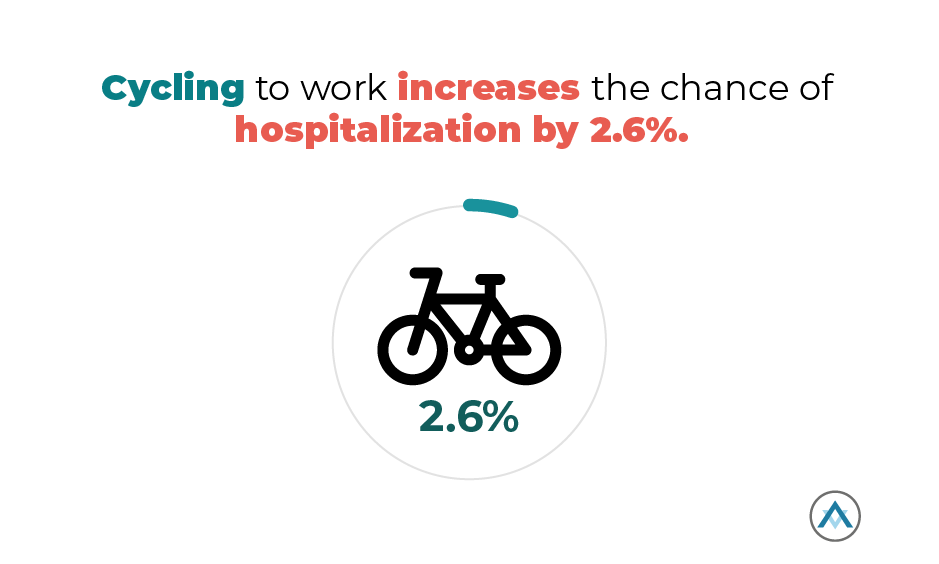
One study showed that commuting to work by cycling for ten years would result in 26 more hospital admittances per 1000 people (Welsh, et al., 2020).
In addition to the risk to pedestrian and cycling commuters’ involvement in traffic accidents, these commuters are exposed to harmful chemicals.
Exposure to these chemicals can cause cancer and non-cancer health risks. The risks are increased the longer a commuter has to travel (Lovett et al., 2018).
When compared with a control group, our workers have lower commutes and are happier and healthier, both physically and mentally.
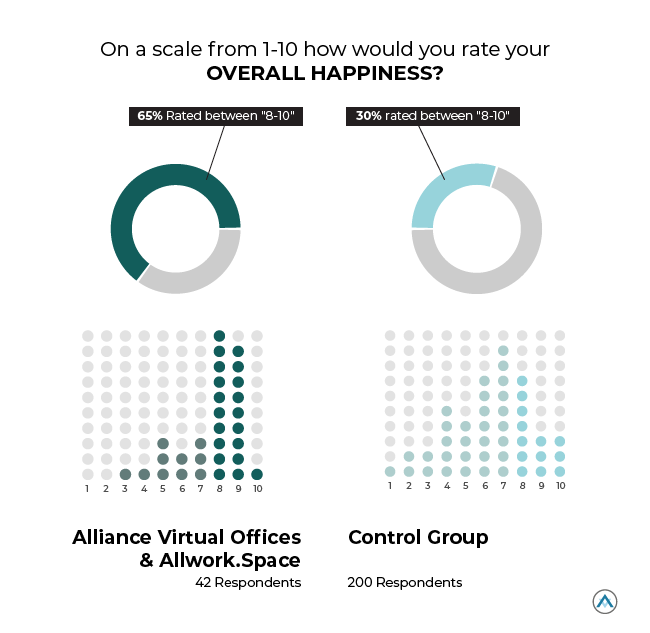
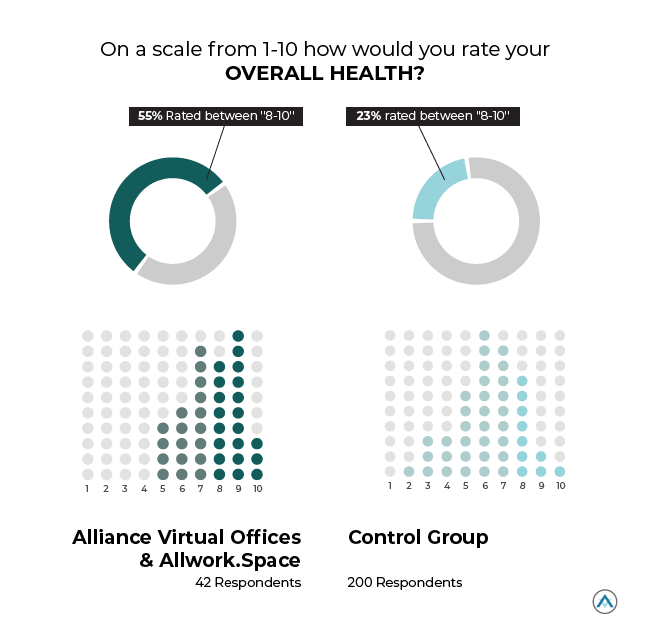
55% of the workers within our organization work either completely online or through a hybrid working environment.
We sought to investigate how our personnel compared to a random control group with questions about mental health, physical health, and feelings of wellbeing.
Here is What We Found:

Comparison Alliance Virtual Offices and Allwork.Space vs. External Results
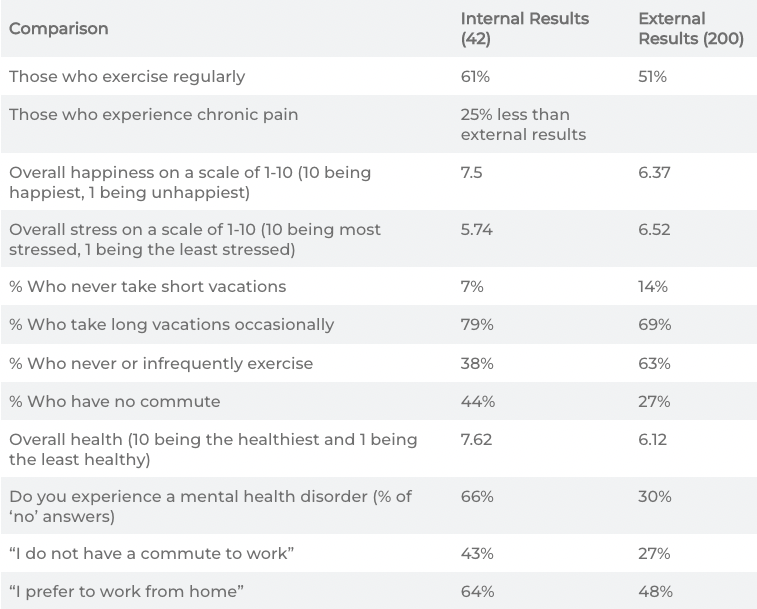
Workplace options led to better feelings of inclusion
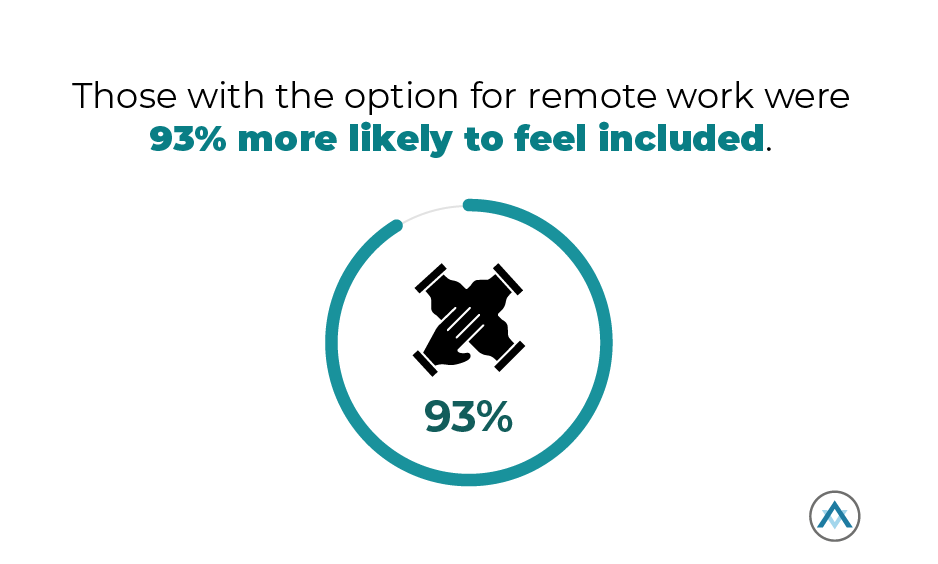
Workers who have the option to work from home are 93% more likely to feel included (Connley, 2021).
When offered the option to work at least 20% of their time at home, workers have less stress and lower intentions to leave their current job.
When offered a choice of where they work, workers reported significantly fewer feelings of burnout, exhaustion, had higher satisfaction rates, and were more productive.
Interestingly, those who were given no choice as to where they worked had more negative consequences, whether it be in an office or at home.
This emphasizes the importance of flexibility and personal choice when determining workers’ schedules (Kaduk et al., 2019).
Conclusion
We hope you found this analysis of diversity, equity, and inclusion among those offered remote work interesting and valuable.
For those curious about how we came to these conclusions, our method, sources, and procedures can be found in our Methods and Procedures PDF
Now, we’d like to hear from you:
What are your experiences with remote work concerning diversity, equity, and inclusion?
Please let us know by reaching out to us on Facebook, Twitter or contact us directly.
This article was originally published on Alliance Virtual Offices.


 Dr. Gleb Tsipursky – The Office Whisperer
Dr. Gleb Tsipursky – The Office Whisperer Nirit Cohen – WorkFutures
Nirit Cohen – WorkFutures Angela Howard – Culture Expert
Angela Howard – Culture Expert Drew Jones – Design & Innovation
Drew Jones – Design & Innovation Jonathan Price – CRE & Flex Expert
Jonathan Price – CRE & Flex Expert
















